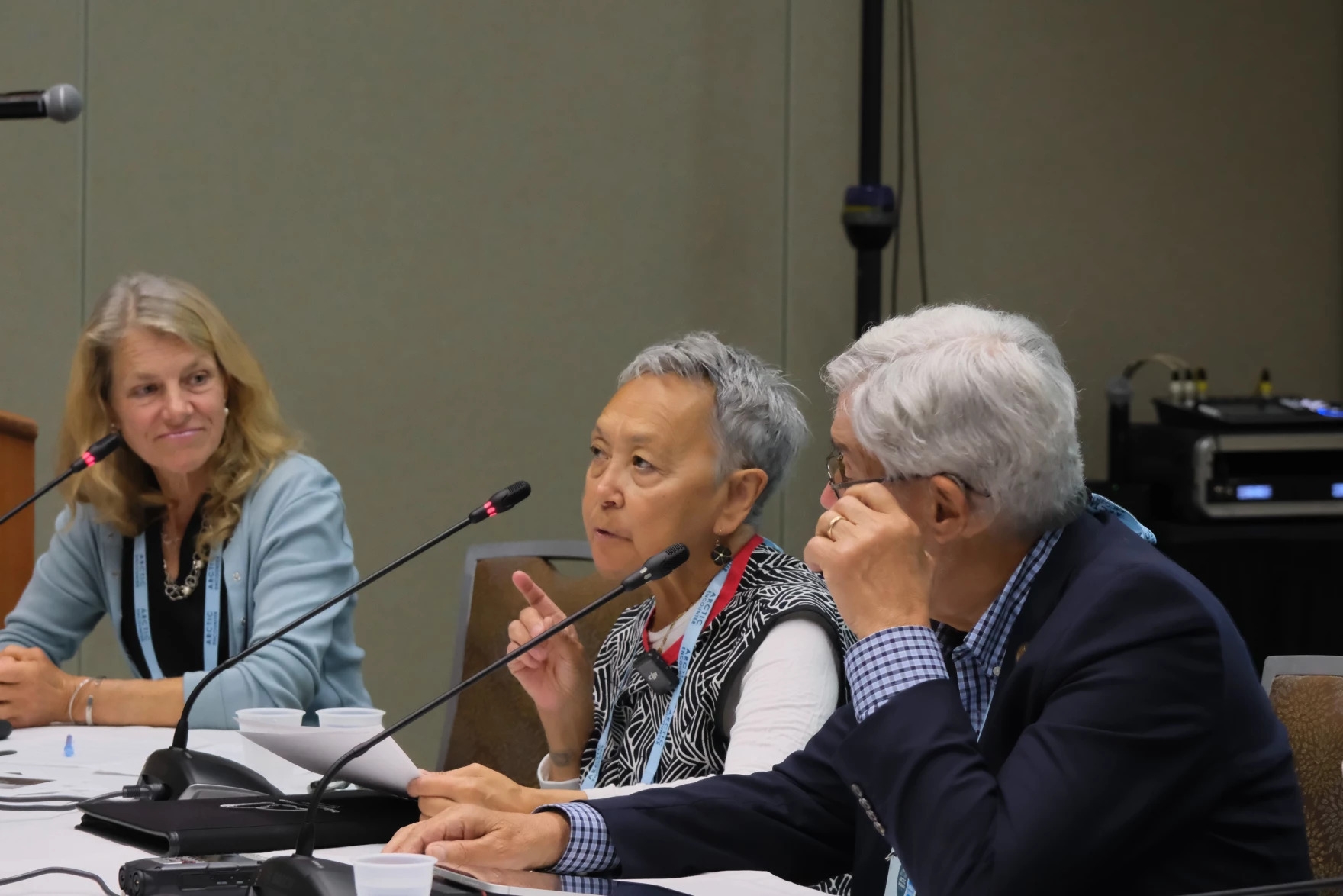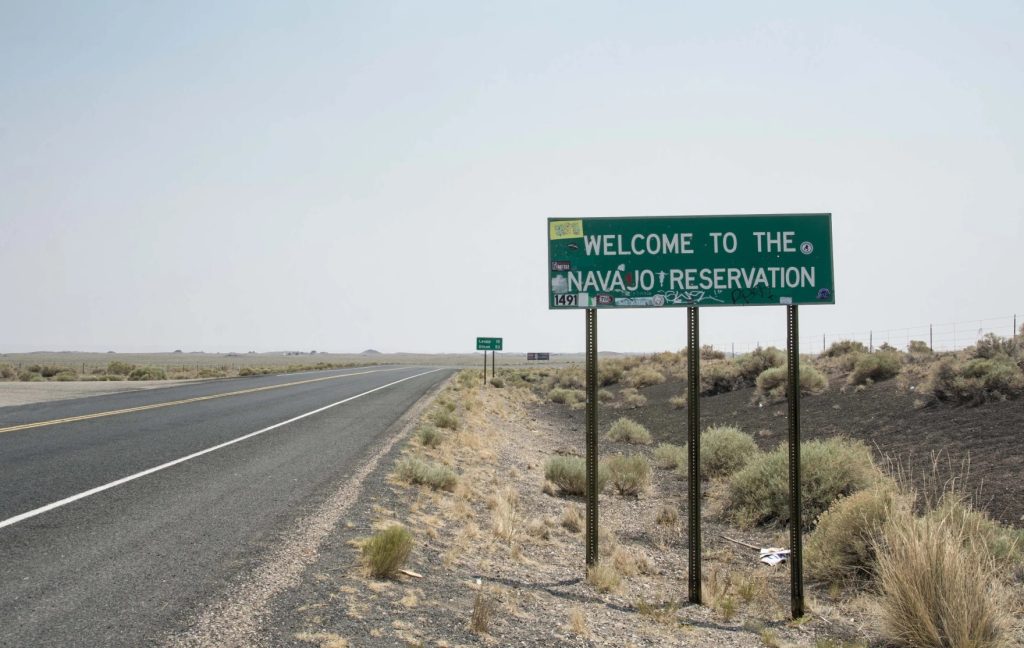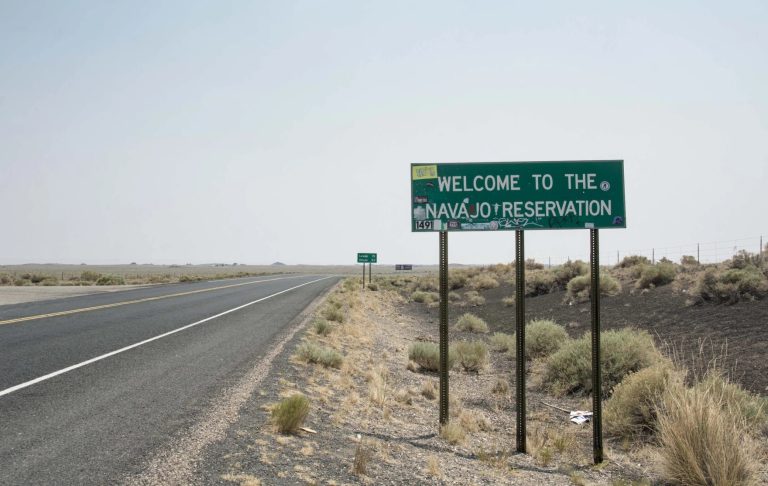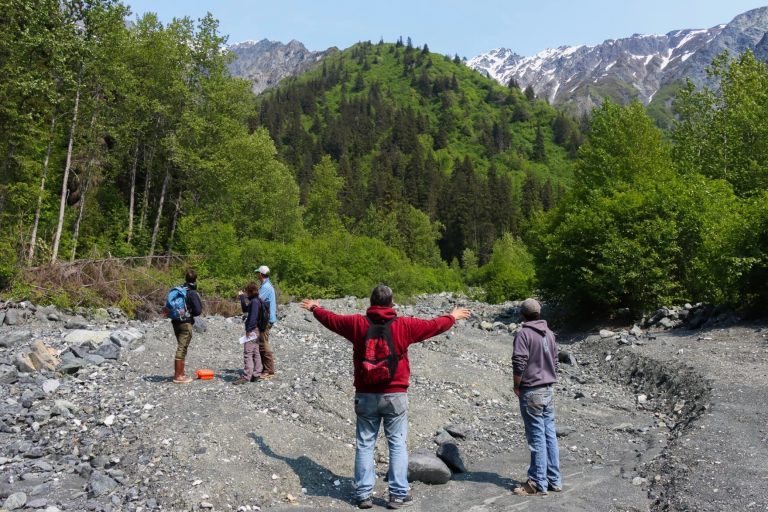Podcast: Play in new window | Download | Embed
Photo: A sign welcomes travelers to the Navajo Nation on July 13, 2021. (Katherine Davis-Young / KJZZ)
A pair of rural counties in eastern Arizona could soon start seeing significant investments in fiber and broadband networks.
The funding is part of a multi-state settlement with two national telecommunications companies.
KJZZ’s Gabriel Pietrorazio has more on how it may help some tribal members get connected.
Arizona Attorney General Kris Mayes announced that Frontier and Verizon have agreed to spend $8 million across Navajo and Apache counties, home to some of the state’s biggest landbase tribes.
“I’m never, ever going to stop bird dogging this for these two counties, because they deserve better. Just because you live in a rural county doesn’t mean that these telecommunications companies can treat you differently.”
For context, tribal lands make up two-thirds of Navajo County, while Apache County has about 70%, containing swaths of the Navajo, Hopi, Zuni, and White Mountain Apache reservations.
Latest Census data shows that more than half of all residents there are Indigenous.
The FCC reported in 2020 that almost a fifth of those living on tribal lands lacked access to broadband compared to 4% off-reservation.
Part of this tentative settlement requires providers to find and fix the root causes of regular 911 outages – on top of conducting a network-wide audit.

Margaret Williams, left, and Vera Kingeekuk Metcalf speak during the Arctic Encounter Summit in Anchorage on July 31, 2025.
(Photo: Alena Naiden)
Food security, climate change, and increased tension with Russia are top of mind for residents in Alaska’s Bering Strait region – and it was one of the topics at the recent Arctic Encounter Symposium in Anchorage.
Alaska Desk reporter Alena Naiden from our flagship station KNBA has more.
Hundreds of people, including politicians, researchers, and Indigenous knowledge holders, gathered for the event.
Vera Kingeekuk Metcalf is the executive director of the Eskimo Walrus Commission. She lives in Nome and was born in Savoonga, a small village on St. Lawrence Island in the Bering Sea.
The community is located closer to Chukotka, in eastern Russia, than to the U.S. and Metcalf says residents have a lot in common with their neighbors.
“Many of our families, relatives, kins originated in Chukotka. So we have this close connection, not just with marine mammals, but people to people.”
Metcalf says climate change has real consequences for residents in her region, who subsist on mammals migrating through the Bering Strait.
A warming Arctic affects those migrations.
Unstable ice conditions also make whaling and walrus hunting more dangerous.
The geopolitical climate has also been changing, according to panelists who spoke at a session focused on conflict and cooperation in the region.
Russia has been strengthening its relationship with China since invading Ukraine in 2022.
As waters stay ice-free longer, that means shipping, fishing, and military activities on the Russian side have been growing as well.
Contributing to tension between Russia and the U.S.
Capt. Steve White is the president of Marine Exchange of Alaska. He says the growth of Russian vessel traffic is noticeable.
“We know that traffic has been increasing in the Bering Strait. Just numbers wise, you know, it’s more than doubled … the season, the amount of time that vessels are transiting is also increasing.”
White says it’s important to look at how this increased activity is affecting locals.
Historically, the Bering Strait region has been a place of collaboration, according to the Walrus Commission’s Metcalf.
Russian and American scientists and locals have worked together to protect their marine subsistence resources and exchange cultural knowledge.
A lot of that work has come to a halt in recent years, but Metcalf and other speakers said they hope that collaboration returns.
Get National Native News delivered to your inbox daily. Sign up for our daily newsletter today.




Leave a Reply